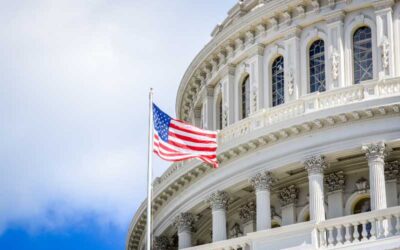Updates brought on by the Paycheck Protection Program Flexibility Act
The SBA and Treasury have released new Paycheck Protection Program guidance and forgiveness applications. This new material addresses changes brought by the Paycheck Protection Program Flexibility Act, including those to PPP loan maturity, deferral, and forgiveness.
Interim Final Rule on Revisions to First Interim Final Rule clarifies that spending 60 percent of PPP proceeds on payroll costs is not a cliff requirement. Put differently, if a borrower spends only 59 percent of PPP proceeds on payroll costs, the borrower will receive partial loan forgiveness, rather than no loan forgiveness, as the text of the Flexibility Act suggests.
Consistent with the Flexibility Act, the Interim Final rule on Revisions to the First Interim Final Rule also provides that:
- the covered period for forgiveness purposes is now the 24-week period after loan disbursement, or 8-week period, if elected; and
- loan maturity is 5 years for loans made on June 5 or after, but remains 2 years for loans made before, unless borrowers and lenders agree to an extension (the date SBA assigns a loan number to the PPP loan is the date it is considered “made”).
Released separately, Interim Final Rule on Revisions to the Third and Sixth Interim Final Rules allows self-employed persons to reach complete loan forgiveness. For self-employed borrowers with a 24‑week covered period, maximum forgiveness now matches their maximum loan amount. Owner compensation replacement equal to 2.5 months’ worth of 2019 net profit (up to $20,833) may be forgiven. For borrowers who elect the 8‑week covered period, forgiveness remains limited at 8 weeks’ worth of 2019 net profit (up to $15,385), which may fall short of the total amount borrowed. For non-owner employees, the wage cap for the 24‑week covered period is $46,154 ($100,000 annualized for 24 weeks), rather than $15,385 for the 8-week covered period.
The changes are borne out in updated forgiveness applications. You can find Form 3508, 6/20 edition, here. The application confirms that owner compensation for the 24-week covered period is capped at $20,833, rather than $15,385 for the 8‑week covered period. It also provides that the FTE safe harbor restoration measurement date is the day when the forgiveness application is submitted, or December 31, whichever is earlier.
The SBA also released a new Form 3508EZ, which is about half the length of the full version. Borrowers that may use Form 3508EZ include those that:
- are self-employed and have no employees;
- didn’t reduce salary or wages of any employee by more than 25 percent during the covered period or the “alternative payroll covered period” (a concept we explored here) and who also didn’t reduce the number of employees or the average paid hours of employees; or
- experienced reductions in business activity as a result of health directives related to COVID–19 and didn’t reduce the salaries or wages of their employees by more than 25 percent.
Generally, the EZ application requires less math and less paperwork. Form 3508EZ’s instructions come in at only 4 pages, compared to the 7 pages for the non-EZ version. As always, we expect more guidance and revisions.
Minnesota Small Business Relief Grants
We are also monitoring Minnesota House File 5, which approves approximately $62 million for grants to small businesses. Half of this amount will go to businesses outside the metro area.
A business will be eligible if it is owned by a permanent resident of Minnesota, is located in Minnesota, employs 50 full-time workers or less, is in good standing with the secretary of state and department of revenue, and can demonstrate financial hardship as a result of COVID–19. Eligible businesses may receive grants of up to $10,000 to use on payroll expenses, rent, mortgage payments, utility bills, and other similar business expenses.
Certain businesses will have priority based on size or demographics. At least $18 million must go to businesses that employ the equivalent of 6 full-time workers or less, at least $10 million must go to minority business enterprises, at least $2.5 million must go to businesses that are majority owned and operated by veterans, at least $2.5 million to businesses that are majority owned and operated by women, and at least $2.5 million must go to “operators of a privately owned permanent indoor retail space and food market that has an ethnic cultural emphasis having at least 25 tenants primarily comprised of businesses with fewer than 20 employees.”
Grants will be approved on a lottery basis. The application period will last no more than 10 calendar days. Southern Minnesota Initiative Foundation will be administering a portion of these funds to businesses in this region, though details are not yet available.
QUESTIONS ABOUT THE NEW INTERIM FINAL RULES AND FORGIVENESS APPLICATIONS?
To learn more, visit the COVID-19 Resource section of our website or contact us at [email protected].



